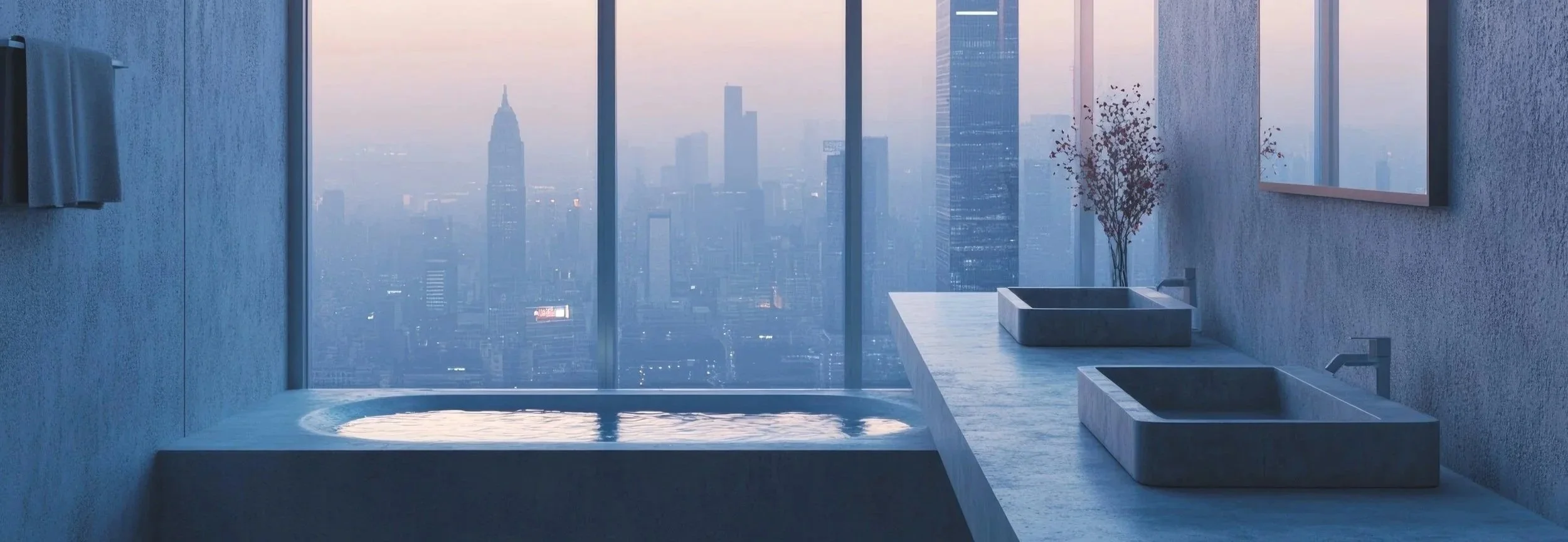
A Vision for Healthy Environments
Introduction to Healthy Buildings
A healthy building is a dynamic environment designed to support the physical, mental and emotional well-being of its occupants. As we spend approximately 90% of our time indoors, the quality of our indoor environments profoundly impacts our health and productivity.
What Is a Healthy Building?
A healthy building is a space intentionally and strategically designed and maintained to enhance the health, comfort and performance of its occupants. This concept integrates principles from building science, environmental health, other health sciences and environmental psychology to create environments that promote well-being. Unlike traditional buildings that focus primarily on structural integrity and aesthetics, healthy buildings prioritise human health through various design and operational strategies.
Core Components of a Healthy Building
1. Indoor Air Quality (IAQ)
High-quality indoor air is essential for health. Healthy buildings utilise ventilation systems that provide adequate fresh air, control humidity levels and minimize pollutants, such as volatile organic compounds (VOCs) and particulate matter. Implementing systems to bring in sufficient fresh air, air purification technologies and selecting low-emission and/or non-toxic materials further enhance IAQ .
2. Thermal Comfort
Maintaining optimal temperature and humidity levels ensures occupant comfort, improves energy and productivity, helps recovery and reduces stress. Careful heating, ventilation and air-conditioning design; building materials that regulate thermal conditions; allowance for thermal therapies; solutions to overheating; and adaptable personalised environments contribute to a healthy indoor environment.
3. Lighting and Views
Access to natural light and views of nature positively affect mood, circadian rhythms and productivity. Healthy buildings incorporate daylighting strategies and provide visual connections to the outdoors. Electric lighting is designed to cater for different tasks, moods, atmospheres and special needs; and the biological and hormonal effect of lights - the circadian rhythm - is central to healthy lighting design.
4. Noise Control
Acoustic comfort is achieved by minimising unwanted noise and enhancing sound quality within spaces. This involves sound-insulating materials, specific detailing, assessment of soundscapes and thoughtful spatial planning to optimise for healthy sound environments specific to the personal preferences of the occupants.
5. Water Quality
Ensuring access to clean and safe water is fundamental. Healthy buildings implement water filtration systems and regularly monitor water quality to prevent contamination. Triggers to drink water can be incorporated into the design to make sufficient hydration a more automatic habit. Blue spaces and features can be incorporated in the design in terms of water features, images of water or art referring to it, blue roofs, rainwater collection, etc. Flood risk has to be assessed and mitigated against where necessary. Therapeutic effects of water can be appreciated and designed for, such as spa-like environments, steam saunas, etc.
6. Safety and Security
Designing for occupant safety includes implementing secure entry systems, emergency preparedness plans and materials that reduce injury risks. As a bare minimum the Building Regulations and Health and Safety Executive (HSE) guidance is to be followed but more specific safety and security assessments can also be undertaken depending on client preferences and any special needs. ‘Secured by Design’ principles can also be taken into account.
7. Moisture Management
Moisture in buildings is an obvious consideration for healthy buildings as mould especially can cause many symptoms and exacerbate health conditions. Whether the building is a breathable or air-tight construction is a critical consideration before the layers of moisture-control and air-tightness can be designed and detailed. Any risk from floods is taken into account and mitigated against, while leak sensors, among other things, can also be utilised to prevent water damage.
8. Dust and Pest Control
Regular cleaning, pest management strategies and the use of materials that resist dust accumulation contribute to a healthier indoor environment. Healthy building cleaning strategies can be implemented, including non-toxic cleaning products.
9. Ventilation
Effective ventilation systems - whether passive or active - dilute indoor pollutants and provide a continuous supply of fresh air, essential for occupant health.
Benefits of Healthy Buildings
The benefits of strategic and early-stage healthy building design include:
Enhanced Cognitive Function: Studies have shown that occupants in well-ventilated buildings with low pollutant levels perform better on cognitive tasks.
Reduced Absenteeism: Improved indoor environmental quality leads to fewer sick days and higher productivity.
Increased Property Value: Buildings that prioritise health attract tenants and buyers seeking wellness-oriented environments.
Improved Business Performance: Investing in your employees and their happiness and productivity will help business performance quicker than investing in energy-efficient buildings, because employees are typically 90% of business operation costs. (Both are important to address.)
Better energy levels.
Reduced allergies and environmental toxin-related symptoms.
Quicker recovery for patients.
Better public health outcomes.
Better mental health through more uplifting and energising environments.
Better support for any personal preferences and needs, helping accommodate and cater for diverse populations and needs.
Implementing Healthy Building Principles
To transform existing spaces into healthy buildings, consider the following steps:
Assessment: Evaluate current building conditions using tools like the Healthy Home Assessment to identify areas for improvement.
Strategic planning: Develop a comprehensive plan that addresses the core components of healthy buildings, prioritising interventions based on impact and feasibility.
Produce a detailed vision for the spatial design and enhancement.
Put the plan into action by upgrading systems, materials and practices to align with healthy building standards.
Monitoring: Continuously monitor indoor environmental quality and occupant feedback to ensure ongoing health benefits.
Embracing the principles of healthy building design is a proactive approach to enhancing wellbeing, productivity and sustainability.
For a personalised evaluation of your living space, take the Healthy Home Assessment and begin your journey toward a healthier home today.
A Vision for Healthy Environments
The buildings we occupy affect our health and happiness in myriad ways, even if much of the time we don’t stop and think about how they make us feel. The fact that we are not always aware of buildings’ influence on us can make their impact even more powerful.
Your home, work and leisure environments affect your life experience - every breath and every moment.
We are products of our environments and thoroughly moulded by them. Being in an uplifting, inspiring and energising space every day can have a profound impact on you.
Why do you generally feel so much healthier when spending time outdoors?
Our big, ambitious goal is to make indoor spaces as health-promoting as outdoor natural environments. And while that may not be literally possible during our lifetimes, we aim to get as close to this goal as possible.
We also believe that wellbeing of people and the planet are intrinsically linked.
We are on a mission to transform living, working and leisure environments into health-promoting and uplifting spaces, while also empowering individuals and organisations to transform their own environments.
We thank our supporters: Innovate UK, the UK’s innovation agency, for making this work possible.


